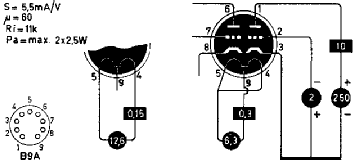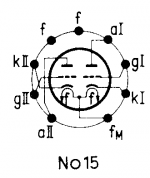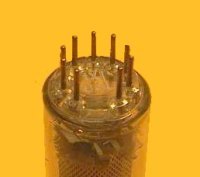
ECC81
|
Variantes |
|||||||||||||||||||||||||||||||||||||||||||
|
Vus: 6006 Répondre: 1
ECC81 (ECC81) - dünnere Röhrenstifte
|
|
|
Helmut Weigl
18.Oct.09 |
1
ich habe in meinem Bestand eine ECC81 des Herstellers Funkwerk Erfurt. Diese Röhre hält nicht in einer normalen (gebrauchten) Röhrenfassung. Alle anderen Röhren meines Bestandes wackeln aber in derselben Fassung nicht. Ich habe die Stifte nachgemessen. Der Durchmesser eines Stiftes beträgt 0,95 mm (andere Röhren 1,0 mm). Noch dazu ist die Spitze konisch und die Stifte ca. 1 mm kürzer als die der anderen Röhren. Wer weiß, ob diese Röhre bewußt so hergestellt wurde, oder ob es sich um einen Fabrikationsfehler handelt? Nachstehend ein Foto der ECC81 (Vergleichsweise eine Röhre mit normalen Stiften). vielen Dank Helmut Weigl Pièces jointes
|
|
Helmut Weigl
19.Oct.09 |
2
Inzwischen haben mich zwei emails erreicht. Es gibt noch weitere Röhren mit dünneren Stiften: weitere ECC81, sowie EZ80, EF80 und EF84. Die Stifte scheinen bewußt so gefertigt worden zu sein. Die konischen Stifte lassen sich wohl leichter in die Fassung einstecken. Allerdings sind nicht alle Fassungen dafür geeignet. Wer hat weitere Infos? --------- Ergänzung: Weitere Röhrentypen: EABC80
|
Fin des contributions forum pour ce composant
| Mentions légales | Plus d'informations |






